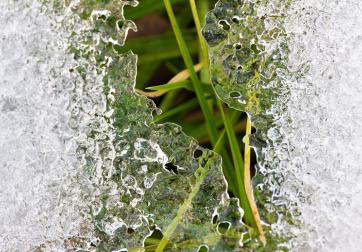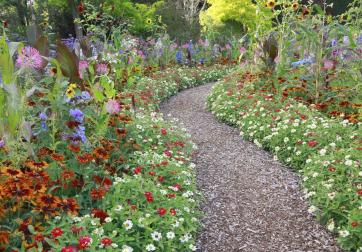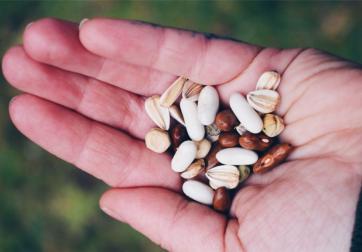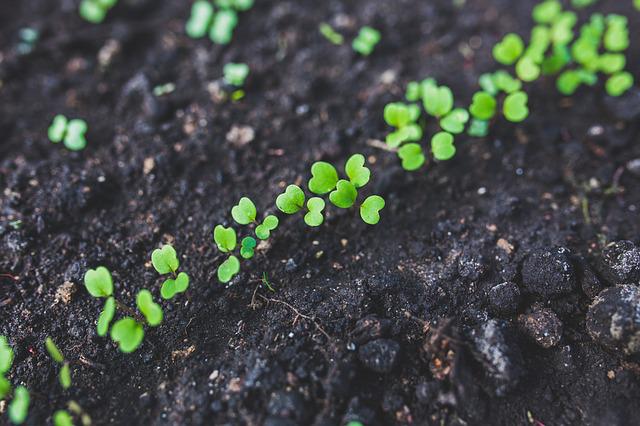
Some of the best quality vegetables are harvested in the fall when warm, sunny days are followed by cool, humid nights. Fall is the perfect season to garden - no bugs, no watering, no weeds, and no sweat – at least not nearly as much as in the summer. It's hard to think about planting a garden when it's near 100 degrees outside, and we are dragging hoses every day just to keep plants alive. Those dedicated gardeners who brave the heat and plant a fall garden will be rewarded when temperatures remain cooler, and the fall rains come regularly.
The most important part of preparing the fall garden is improving the soil. Compost will add soil fertility and retain moisture, which will also help cool the soil.
Select seeds that mature quickly so they can be harvested before frost. The easiest plants for fall are leafy greens such as spinach, kale, collards, mustard, and lettuce. Also, sow seeds of turnips and radishes. If you can grow your own or can find transplants of broccoli, cabbage, brussels sprouts, and cauliflower, they taste much better when grown in the fall than in the spring.

Mulch the area to be planted to cool the soil. Soil temperatures can reach 140 degrees in the summer sun, and that means quick death for seeds and seedlings.
One way to reduce soil temperature is to plant in furrows, which are long narrow, shallow trenches. Place seeds in the bottom of the furrow and cover the recommended depth with soil or compost, but do not fill the furrow. The seedlings will be partially shaded inside the furrow and kept cooler. Seeds require constant moisture to germinate. If they dry out, they will die immediately. Flooding the furrows by laying a hose at one end and letting the water run slowly saves water and keeps the seeds moist so they can germinate.
Another way to give seedlings an advantage in the summer heat is to shade them. Shading helps to reduce soil temperature and prevents excess evaporation. One of the best and easiest devices to shade plants is a tent made from old window screens. Remove shade materials once seedlings have emerged and are established. You could do something as simple as laying a board over the furrow or covering it with wet newspapers or straw mulch. Just be sure to check often and remove the covering as soon as seedlings start to sprout.
Mulch the new plantings. Mulch helps to retain moisture, cool the soil, keep weed competition down, and enrich the soil as it breaks down.
Another helpful practice is to soak seeds overnight before planting. Seeds must absorb water to germinate, and this will speed up the process. Instead of soaking bean seeds which will cause them to absorb too much moisture and crack, wrap them in a damp paper towel inside a plastic bag overnight.
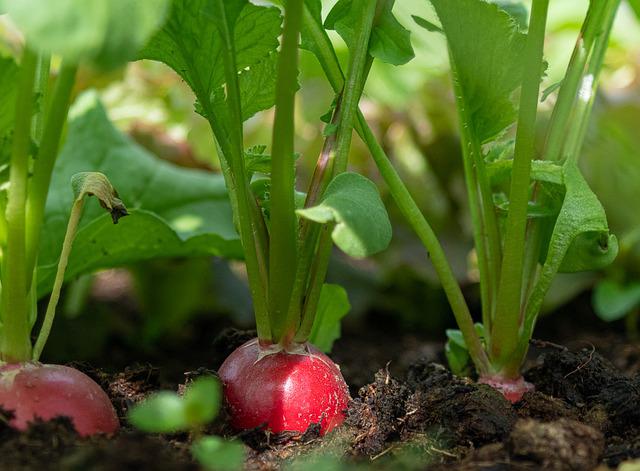
Be creative by using what is available in your garden. Make seed furrows on the east side of existing tomato or okra plants to prevent exposure to the hot western sun. Plant beets, turnips, and radishes under okra to take advantage of the shade that will help cool the soil. A little sweat now will pay off with vegetables maturing during the cooler days of fall when we can enjoy working in our gardens and appreciate the bountiful fall harvest.
National Garden Clubs, Inc. is a 501(c)(3) organization that aims to promote the love of gardening, floral design, and civic and environmental responsibility. There is a local club near you, click here to find one and join. Subscribe to the NGC’s blog by entering your e-mail here. You do not have to be an NGC member to subscribe. NGC welcomes blog article submissions, e-mail the Blog Administrator at blog@gardenclub.org.

 Board Member Login
Board Member Login Our Store
Our Store Blog
Blog



